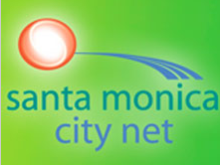More Details from the Incredible Santa Monica City Net
Santa Monica's approach to building community owned broadband that puts the community first has been wildly successful. They have not focused on providing residential connections, and likely will not in the future, focusing instead on meeting their municipal needs and businesses to spur economic development.
They can deliver up to 10Gbps to businesses that need it and they have connectivity throughout the City for whatever projects they choose to pursue. This includes free Wi-Fi in parks, controlling traffic signaling (prioritizing mass transit, for instance), and smart parking applications. On top of all that, their investments have saved more than a million dollars that would have been wasted on slower, less reliable connections provided by leased lines.
In the matter of controlling traffic signals, Santa Monica wants all intersections with fiber-optics.
Arizona Avenue, the Mid-City area and the city's office district will all be getting makeovers if the City Council approves two contracts that will connect 40 signalized intersections to City Hall's centralized traffic control system. The work represents the fourth phase in a five-phase effort to connect all of Santa Monica's intersections using fiber optic cables.




